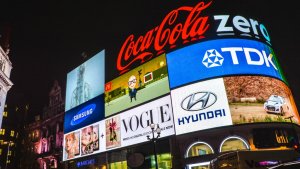As more and more brands find themselves in the news for all the wrong reasons, design can play a big part in getting the right message across.
How Design Can Help Brands Survive And Thrive In Controversial Sectors
As more and more brands find themselves in the news for all the wrong reasons, design can play a big part in getting the right message across.

In a climate where societal thinking is evolving fast and the goalposts are constantly moving, bringing products and services to market can present a minefield of problems for businesses.
The conversations around things like race, gender, mental health, cancer, sex, menstrual products and cannabis are evolving at a faster rate than ever before, and it’s crucial that businesses keep up.
Even much-loved, long-standing products can suddenly find themselves in hot water. Look at the impact that the Black Lives Matter movement is having on companies like Aunt Jemima, Mrs Butterworth’s and Uncle Ben’s, all of whom are currently reviewing their brand and packaging identities to avoid contributing to systemic racial biases.
Prejudice, embarrassment, shame and stigma simply don’t fit with increasingly open, inclusive and accepting modern mores.
But what does all this mean for brands? How should you respond to the new way of talking about topics that provoke fear or anger (or require a wink and a brown paper bag)?
Number one when it comes to homing in on the right design solution and tone of voice for a taboo or controversial project has to be: know your audience. You also need to think about the specific prejudices your product faces, and be prepared to adapt when the conversation changes.
Durex is a great example of a brand that has responded to new thinking around sex and contraception, taking it from ‘something for the weekend, sir?’ to celebratory and honest.
Its latest campaign addresses the effects that the porn industry has on how people believe sex should be: “So, what if we take a stand for sex? Worry less about how it ‘should’ look. Celebrate how it can feel. Where porn’s not the norm. And STDs are kinda real. Women aren’t judged too quick. Guys aren’t told they need a big ****.”
Bodyform’s ‘blood normal’ gave us a guy buying sanitary pads for his girlfriend. Kotex poked fun at campaigns involving roller-skating women in white trousers. And testicular cancer ads have taken a more ‘ballsy’ angle (‘Your hand’s already down there – check yourself!’). We probably wouldn’t have been ready for any of that ten years ago.
It’s important to know exactly who your talking to, and how to address potentially tricky issues with honesty, authenticity and, where appropriate, humour and empathy.
Hemp life
The current cannabidiol (CBD) boom is a case in point. Cannabis and humans have had a relationship spanning millennia. It’s been used for making rope, as a food and a medicine, and its psychoactive properties played a big part in religious and recreational rituals.
But somewhere along the line, it fell out of favour – and it’s had a pretty major image problem ever since. The positives fell by the wayside and it earned itself a reputation as a portal to hard drug use. All the good stuff got forgotten as we eschewed natural remedies for everyday ailments in favour of over-the-counter and prescription pills and potions.
Right now, though, we’re in the midst of another big shift, and cannabis – specifically CBD, the non- psychotropic compound – is enjoying a surge in popularity.
This is, in part, because more people are looking for natural solutions to everyday niggles. Sleep aids, stress relievers, energisers, etc. And in part because restrictions on its sale have been lifted in a lot of countries.
So, perhaps predictably, the CBD market is on fire right now, with new products launching in varying strengths, promising to remedy all manner of modern ailments. But it’s all a bit ‘wild west’, and the CBD industry has some work to do to gain trust and shake off its ‘head shop’ vibe.
The situation isn’t helped when you’ve got lab tests from the Centre for Medicinal Cannabis revealing that 62 per cent of the UK high street products studied didn’t contain the CBD content promised on the label.
One product (retailing for £90) had no measurable amount of the CBD at all. And where lacking in advertised cannabidiol, some products were packing tetrahydrocannabinol (THC), the intoxicating – and illegal – chemical that causes a cannabis high.
So the market is confused and there’s understandably little confidence. What role can branding play to bridge the gap and restore faith?
Natural healing
Recently, wellness startup Present Life created a product line called Healist to take advantage of this sector growth. Crucially, it wanted to change the narrative around CBD products by removing confusion, demonstrating integrity, and making the health benefits crystal clear to the consumer.
In this case, the role of the brand identity was to cut through all the white noise and suspicion associated with CBD products, to build trust, demonstrate efficacy, and to bring it into the mainstream.
A key part of the strategy was to explain the benefits to be found where modern science and botanical know-how meet. To get that across, the fusion message is evident at every touchpoint on the consumer journey.
The bespoke packaging format makes a real virtue of the science and nature story and focuses on the effectiveness of the ingredients.
A new conversation
Designers have a big role to play in changing the conversation around all kinds of topics. That’s becoming more important as we see consumers demand that products and brand messaging chime with their views.
It can be tricky. Not everyone is on the same journey and, in the case of CBD oil, there may be a way to go before everyone sees it as the useful, unthreatening alternative to pharmaceuticals that it can be.
At the end of the day, however you’re seeking to engage with new approaches to controversial or sensitive topics, devising brand strategies that extol the virtues of honesty and clarity is a pretty good place to start.
Simon Forster, founder & executive creative director, Robot Food.
Thanks for signing up to Minutehack alerts.
Brilliant editorials heading your way soon.
Okay, Thanks!
